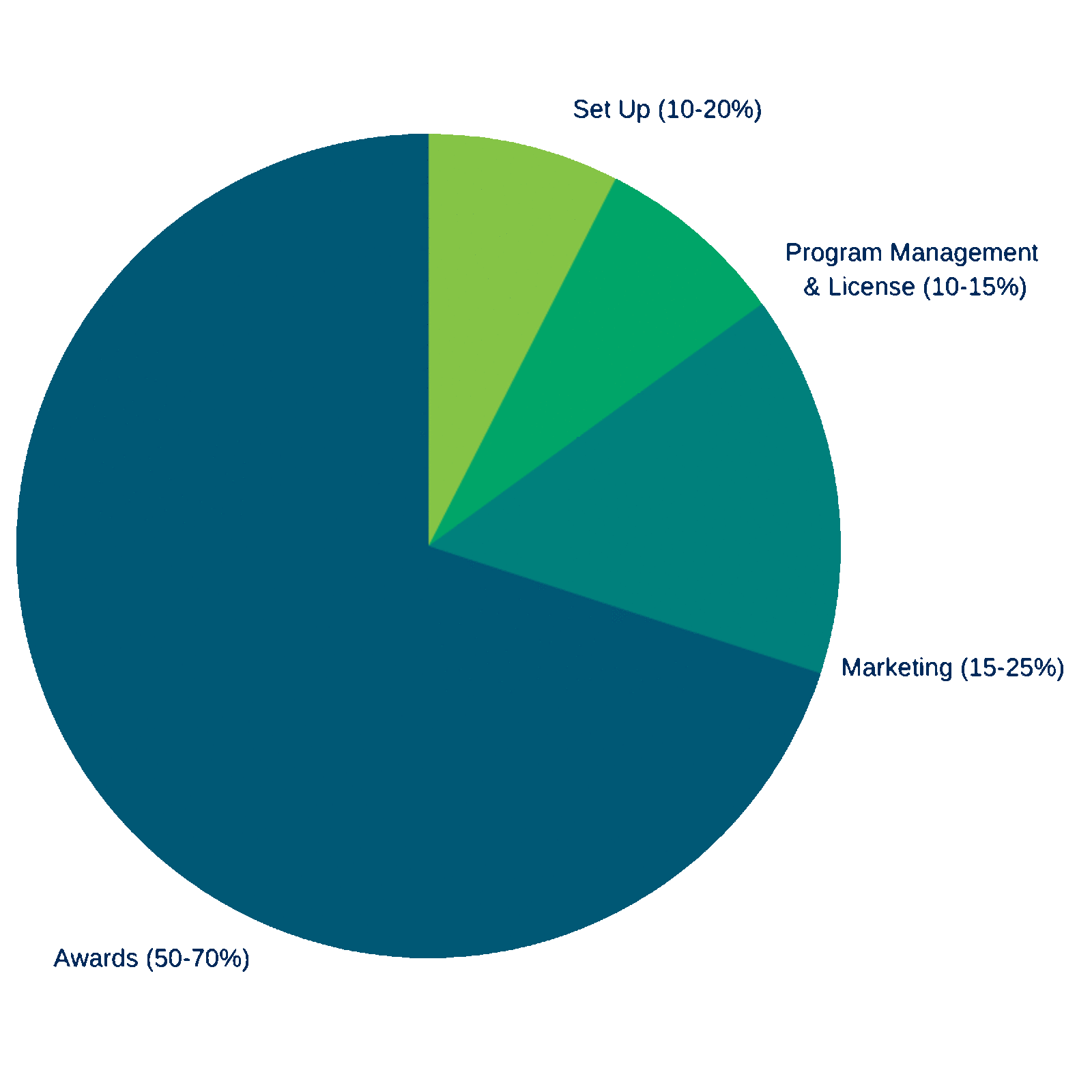Let’s start with the obligatory “it’s that time of the year” statement. At this point in the year, we’re building out our 2022 roadmap here at HMI and likely you are, too. Here’s how it typically goes. You start asking questions like, “What am I going to enact to achieve your goals?” “Are the tools, projects, and campaigns that I need to meet my goals and delight my target audience enough?”
Usually, it’s not a cut and dry process, so you may need to move some dollars around as things fall into place. For instance, an incentive loyalty program may be one of those budgeted items helping you meet your growth, product, or engagement goals, but it could be something you need some help wrapping your budget around.
In this article, we’ll walk you through how to plan and build your program loyalty budget to maximize your investment and success.
By: Lincoln Smith
Build Your Loyalty Budget Algorithm Outline:
You don’t need to be a Google employee to build this algorithm out. It consists of three main buckets:
1) Who are you trying to move?
If you work for a distributor, this is likely your customers, but it could be your salespeople at your different locations, too. If you’re working for a manufacturer, it’s likely your down channel partners, your manufacturer rep agencies, your distributor principles, or perhaps your distributor sales reps or even customers.
It’s important to size up this audience. What’s the target audience size? Is it 100 people or 10,000 people? What’s the business case for targeting them? What challenge or opportunity are you solving or seizing?
2) What are you asking the target audience to do?
Here you also need to take into account what you’re trying to move. Is it growing a target segment, moving unengaged people to engaged, or sales of a specific product or category? This decision can drastically change the scope of investment and potential resistance to change.
For instance, you could be trying to increase loyalty through mindshare and engagement. Or you could be looking to get people into the store more frequently. Maybe you’re trying to increase sales of a specific product or line.
If you’re trying to incent an action, it probably has a path of resistance. You’ll need to figure out how much resistance there will be and adjust if you’re feeling too much unexpectedly.
3) What is their movement worth to you? (i.e. what are you willing to invest)
What you’re willing to spend often ties heavily into who you’re trying to move and what behaviors you're driving with your target audience. That number can often be drilled down to between 1% and 3% of gross revenue of the target market or product.
Loyalty Budget Basis Examples
Here’s a few examples for you:
1) Let’s say you’re a distributor targeting your top 30% of customers. By nature, this group is heavily loyal to you and crucial to your business. The ask of what you’re trying to get them to do is minimal — this is a retention play and the “ask” is staying loyal and not taking any of their wallet share elsewhere.
The best strategies often put a carrot out in front of these customers, a lot of the time in the form of a travel program or a President’s Club. This is typically thought of in the incentive loyalty industry as a defensive strategy. It is designed to recognize your best customers and get them to stay your best customers. This equates to a personalized spending goal about the same (or maybe a little bit more than) what they spent with you last year.
Say this group represents $100M in sales year over year. Based on this number, loosely, you’d want to plan on investing in rewards between $1M and $3M. For a group incentive travel program this breaks down into per head cost, which leads to questions of how many people you can bring on the trip given that budget, what are your offered excursions going to be, etc.
You can find more information about planning the right group travel trip here.
2) Next, you’re a manufacturer and the new product that you want to push accounts for $20M in sales to date. If you want to move that product to that new sales goal and see significant impact from your channel partners, you should look to spend $200k-500k.
Most of that will come out as rewards, as you’ll see in our breakdown below. But think through other ways to garner attention from your down channel partners. Are you going to be spending money on licensing an engagement or gamification platform? These can vary widely, from as cheap as a few hundred to as expensive as tens of thousands. No joke.
Make your decision again based on the lift and effort of your audience. Is your product and your brand relatively unknown to your sellers and buyers? Sometimes it can be more beneficial in the long run to focus on a splash of brand awareness first, which can drastically increase the investment.
There are two exceptions to this 1-3% rule. In both cases, you’ll likely want to invest closer to 3-5%. Those expectations are…
- If the product, group, or category is incredibly high margin
- The ask, or the thing you’re getting them to do (i.e. the goal of the program), is a heavy lift or critical in solving a business problem, you should look between 3-5% to capture attention
An extreme example: if you’re asking your customers to increase sales by 30% (which you probably wouldn’t because that’s a very tough goal) you probably want to invest closer to 5% or more back to that to make it worth the extra strain on their business and wallet.
Break Down and Unforeseen, Extra, or Supplementary Costs
Whenever you’re budgeting for the year or any large project, your forecast will likely not look exactly like what you’ve spent. Incentive loyalty programs can be similar, however, we typically recommend breaking down your budget plan using the following chart. (Keep in mind, this would be the budget for outsourcing, where there are set up and program management fees built in.)
Now, as you can see, the chart (and thus your budget) can fluctuate. There are a few reasons for that:
1) Set up. When outsourcing, it’s important to understand that the type of program or promotion you’re trying to run can have different set up costs. For example, a promotion where there’s a one-time platform set up and license might come with a higher relative price tag than setting up a long-term points platform.
2) Program Management and License. Same as above. Where a promotion might take less effort to stand up, program management fees for a long-term promotion might be more expensive since there’s more to track with a long-term incentive loyalty program.
3) Marketing and Awards. We often say that awards and marketing are flexible because those two things depend on the size of the audience and sometimes the performance of your program. For example, if your program isn’t getting the enrollment you wanted, then you might need to spend some local marketing dollars to increase awareness.
These categories can be thought of as unforeseen costs but planning for their flexibility makes them manageable loyalty budget costs. One of the ways you can manage this further is by configuring how your rewards are billed. We go into how to structure billing more here, but your options could be billing on issuance, redemption, or a hybrid model.
Conclusion
Whether you’re outsourcing your incentive loyalty program or doing it yourself, your costs should mostly remain unchanged. A good incentive loyalty program is an investment, and planning out your budget around these parameters will help you to keep it successful in the future.
Lincoln Smith is the CSO at HMI Performance Incentives and has over 20 years of experience helping manufacturers, distributors, and service companies design award winning performance incentive strategies that motivate sales organizations and channels to accelerate growth and enhance customer engagement.



